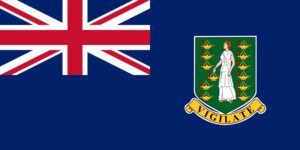The British Virgin Islands were founded in the 1st century BC. Made by the Arawak tribe from South Africa. They lived there until they were expelled from the island by warlike Caribbean tribes in the 15th century.
Christopher Columbus first discovered the Virgin Islands in 1493 during his second voyage to the Americas. He named her Santa Ursula y las once mil Vergenes, which means “Saint Ursula and the 11,000 Virgins”. Hence the name Virgin Islands. The Spaniards were the first to discover and claim the island, but they did not settle it and other European empires migrated. Like many islands in the Caribbean, they became havens for pirates and other criminals.
In 1672, England conquered Tortola from the Netherlands. They also took control of Anegado and Virgin Gorda. Sugar cane was grown on the island. Slaves were brought from Africa to work in the fields. Slavery was abolished in the 19th century. A famous landmark on Tortola is St. Philip’s Church, believed to be America’s oldest free black church.
| Capital | Road Town |
| Population | 31,569 (Source: 2023 worldometer) |
| Major Cities | ROAD TOWN (capital) |
| Borders | Puerto Rico and the US Virgin Islands and north-west of Anguilla |
| Gross Domestic Product (GDP) | $100,562,000,000,000 (2022 worldometer) |
| Currency | US dollar (USD) |

British Virgin Island Major Industries: tourism, light industry, construction, rum, concrete block, offshore financial center
British Virgin Island Agricultural Products: fruits, vegetables; livestock, poultry; fish
British Virgin Island Natural Resources: NEGL
British Virgin Island Major Exports: rum, fresh fish, fruits, animals; gravel, sand
British Virgin Island Major Imports: building materials, automobiles, foodstuffs, machinery
Total Size of British Virgin Island: 151 sq km (source: 2022 The world factbook)
Geographical Low Point of British Virgin Island: Caribbean Sea 0 m
Geographical High Point of British Virgin Island: Mount Sage 521 m
Climate of British Virgin Island: subtropical; humid; temperatures moderated by trade winds
General Terrain of British Virgin Island: coral islands relatively flat; volcanic islands steep, hilly
World Region or Continent of British Virgin Island: Central America
Geographical Coordinates: 18 30 N, 64 30 W
British Virgin Island Government Type: NA
British Virgin Island Nationality: British Virgin Islander(s)
British Virgin Island National Holiday: Territory Day, 1 July
British Virgin Island Independence: none (overseas territory of the UK)
British Virgin Island National Symbol: Baird’s tapir (a large, browsing, forest-dwelling mammal); keel-billed toucan
British Virgin Island National Anthem or Song: note:?as a territory of the United Kingdom, God Save the Queen is official (see United Kingdom)
British Virgin Island Languages Spoken: English (official)
British Virgin Island Religions: Protestant 86% (Methodist 33%, Anglican 17%, Church of God 9%, Seventh-Day Adventist 6%, Baptist 4%, Jehovah’s Witnesses 2%, other 15%), Roman Catholic 10%, none 2%, other 2% (1991)
The British Virgin Islands (not to be confused with the United States Virgin Islands) are a small archipelago consisting of four main islands and many smaller islands in the Caribbean.
There are about 60 islands here in total, but only 16 of her islands are inhabited. These include Anegada, Cooper, Guana, Joost Van Dyke, Mosquito, Necker, Peter, Salt, Scrub, Tortola and Virgin Gorda.
Since it is an archipelago, there are no countries bordering it. However, its closest neighbors are Bermuda to the north, Anguilla to the east, the US Virgin Islands to the south and southwest, and Puerto Rico to the west.
The total area of this small archipelago is 153 square kilometers. The BVI population was estimated at 30,237 in 2020.
In case you’re wondering, the residents here are called “British Virgin Islanders”.
The capital is called Road Town and has a population of 12,603 (2012).
While the coral islands have relatively flat terrain, the volcanic islands have beautiful rolling hills that are perfect for leisurely exploration.
In 1493, Christopher Columbus visited this island and named Las He Virgines.
To follow in the footsteps of famous explorers and visit this famous nautical destination, the coordinates are 18.4285 degrees north latitude, 62.6243 degrees north latitude.
The British Virgin Islands have a subtropical climate, with trade winds causing cooler temperatures. bliss!
The national dish of the British Virgin Islands is called ‘fish and mushrooms’ and is usually served with mayonnaise or butter sauce. It doesn’t sound very appetizing, but I’m sure it will.
Life expectancy here is 79.8 years (2015) for him in the sun.
Surprisingly, the BVI currency is the US dollar.
Locals say he pays a very low income tax of 8%.
Due to her British nationality, a British Virgin Islands resident was once her legal EU citizen.
As you might have guessed, the official language of the BVI is English.
The British Virgin Islands boasts the most prosperous economy in the Caribbean due to its thriving tourism industry.
They grow fruits and vegetables, raise livestock and poultry, and catch fish. The country’s industry consists primarily of tourism, but also includes light industry, construction, rum and offshore banking.
The British Virgin Islands export fresh fish, rum, fruit, animals, gravel and sand.

